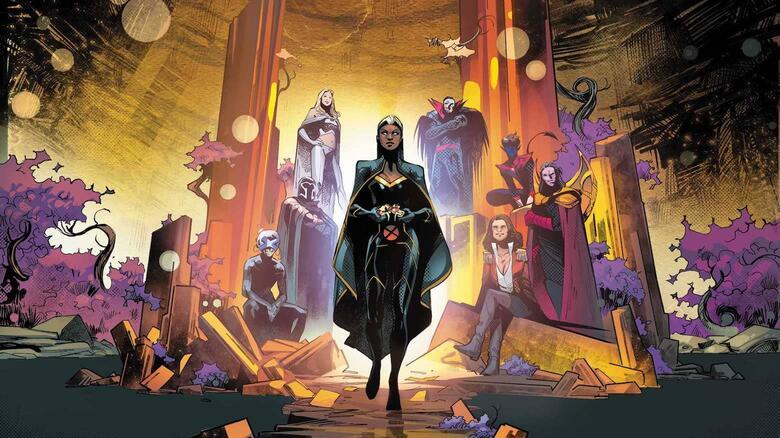Inferno #1 Review: The Fire Burns Bright In Jonathan Hickman's X-Men Swan Song
In 2019, Jonathan Hickman and his artistic collaborators set the Marvel Universe on fire with House of X and Powers of X. The two complementary miniseries marked the beginning of a new era for the X-Men, a complete reinvention of the concept on a scale not seen since Grant Morrison and company ditched the yellow spandex for black leather in New X-Men in 2001. The story Hickman started in those series reaches its fiery conclusion in Inferno. The new miniseries sees Hickman teaming up with artist Valerio Schti, colorist David Curiel, letterer Joe Sabino, and designer Tom Mueller to bring closure to the biggest unresolved storylines from House and Powers. Based on the first issue, Hickman plans to exit in a blaze of glory.
Despite Mueller being the only member of the art team from House of X and Power of X also
working on Inferno, it still feels visually connected to those previous miniseries. Schti belongs to the same Stuart Immonen-influenced school as HoX/PoX pencilers Pepe Larraz and RB Silva. As with his peers, Larraz in particular, Schti's linework is loose and his compositions lush. Curiel's digital colors complement the penciling well, managing to capture the palette Marte Gracia established for Krakoa, something with which other colorists on the line have struggled at times.

It isn't only the visual style that matches HoX/PoX, but the visual themes. Those series showcased mutants reshaping the worlds of man and mutant overnight, figuratively, with Magneto declaring mutants to be gods. As if to prove the point, mutants reshaped a planet in a very literal sense in the Planet-Size X-Men one-shot, drawn by Larraz. Schti hones in on that image of mutants as deities, depicting the Quiet Council of Krakoa in one panel like gods sitting atop Olympus, Curiel adding divine light among them.
Hickman's script reexamines some assumptions from HoX/PoX, doing what he does best by giving readers enough information to theorize and assume, creating a fun and engrossing tension between the reader and the work. Moira MacTaggert—a.k.a. Moira X, the game-changing retcon/reveal from House of X #2—is at the center of Inferno's story and could be the snake that sets fire to the mutant Garden of Eden she helped to build.
Inferno #1 sees Schti recreating a scene from House of X #2 involving Moira, Destiny, and Mystique. This scene is where the similarities in Schti and Larraz's styles are most apparent and important. Even so, having a new artist redraw an old scene seems indulgent and unnecessary at first, but it's worthwhile to compare this version to the original. Dialogue is changed, and the new version inserts an additional page. Knowing Hickman's attention to detail, no minor revision can go unexamined. Is this the authentic version of a scene relayed imperfectly before? Is it a version of the exact moment from another of Moira's lives? Whatever it may be, its recreation and its setting, wreathed in ruinous flame, suggests it is central to Inferno's story.
But as much as Hickman is known for detail-oriented high-concept sci-fi, there's levity in Inferno #1 as well. Many characters speak like overeducated theater students vamping for attention. You also get monkeys with doctorates, the women of Hordeculture going through what could be a scene from a particularly biting episode of The Golden Girls, a subtle Spy vs. Spy bit, and interactions between Krakoa's greatest heroes that bring forth their natural camaraderie.
Inferno #1 looks to be a powerful ending to Hickman's time working on the X-Men line, bringing forth all the same attributes that set readers abuzz during his debut. It provides the sense he's leaving nothing on the table. He's blessed again with one of modern superhero comics' best artists as a collaborator. As such, Inferno is shaping up to be as memorable as the miniseries that preceded it. Higher praise is hard to find.
Published by Marvel Comics
On September 29, 2021
Written by Jonathan Hickman
Art by Valerio Schiti
Colors by David Curiel
Letters by Joe Sabino
Cover by Pepe Larraz and Marte Gracia
0comments